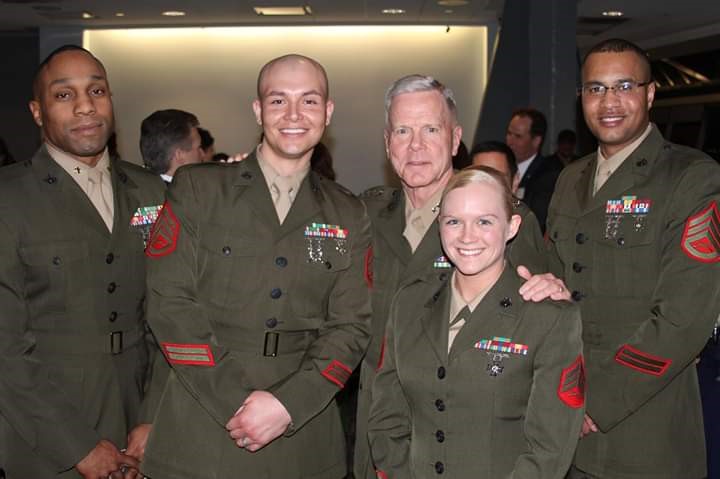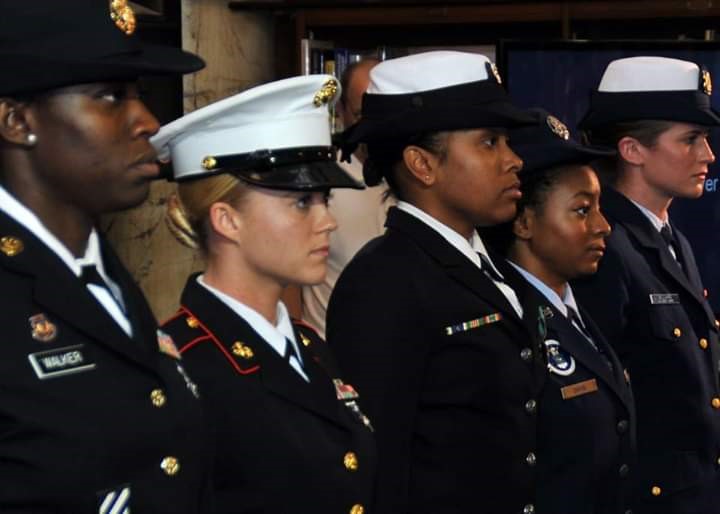The opinions expressed in this commentary are solely those of the author and do not necessarily reflect those of the National Council of Architectural Registration Boards (NCARB).
The typical path to becoming an architect involves earning your degree from an accredited program, gaining the required experience hours, passing the Architect Registration Examination® (ARE®), and then applying for licensure in your local jurisdiction. For most, it is a linear and straightforward path. For me, it has been full of curves, road blocks, detours, back tracking, and some fence jumping.
Although I am navigating the path to licensure in an untraditional way, I think it gives me a unique perspective. Coming from a marketing and public affairs background in the United States Marine Corps, obtaining a bachelor’s degree in project management, and now working toward my master’s degree in architecture, I view the profession at an angle most people are unable to see.
There aren’t many pronounced parallels between the Marine Corps and the profession of architecture, but there is one glaring differential—ubiquitous leadership. The military thrives on leadership. Without strong leadership, morale drops, efficiency decreases, missions fail, and people die. From the moment you raise your right hand and give the oath of enlistment, the Marines begin to instill a sense of leadership in you. It is progressive as you move through basic training and it is continuous throughout your career. I joined the military to gain a sense of purpose and to give back to my country. To me, there is nothing more satisfying or rewarding than knowing you made a difference.
Embracing a Culture of Mentorship
I applied for the 2018 Think Tank because I wanted to engage with NCARB leadership and play a role in impacting the licensure process. Just like with my military service, I wanted the opportunity to make a difference and serve in some capacity. Going into this opportunity with minimal interaction or experience within the profession, I was surprised by some of the topics that came up. The resounding feedback was a lack of leadership and mentorship. Truthfully, I was baffled because I never had to actively seek out leadership or mentorship. These are part of the foundation of making a Marine. How could objectives be accomplished without leadership? How could any profession continue to thrive without mentorship?

I worked under several commands throughout my time in the Marine Corps and had exposure to countless different leadership styles. There are good leaders and bad leaders. You learn from both—what is effective and what isn’t—and take bits and pieces to develop what works for you. What made the greatest impact on me though wasn’t the exposure or the opportunities I was afforded. It was having a mentor. My mentor gave me the guidance and advice I needed to become as successful as possible in both my professional and personal life. If I had any questions, issues, or just wanted to pass an idea by someone, I knew exactly who to go to. If he couldn’t give me answers, he could at least point me in the direction of someone who could. I attribute my successes in the Marine Corps to his guidance, and even now that he's no longer with us, that guidance continues to impact me to this day.
When it came to furthering my education and pursuing a career in architecture, I had to take much more initiative to find a mentor. I didn’t have a sole source for information. I didn’t know who to go to for advice or to ask questions. I was completely in the dark and on my own. No one reached out to me or made an effort to guide me. I had to actively seek mentorship out, and it wasn’t easy.
Developing and Empowering Leaders
I realize there is a huge difference between defending the country and the role of the architect in protecting public health, safety, and welfare. However, should it not be just as important to develop effective leaders throughout the profession as it is in the military? There is a lot of discussion about the changing role of the architect and the risk of becoming an obsolete profession. One way we can combat this is by developing our future leaders, strengthening our profession through mentorship, and making more of an impact on the industry as a whole. I truly believe leadership will eventually determine the success or failure of the profession.

As the saying goes, you are only as strong as the weakest link. Whether you’re new to the profession or have years of experience, had the same concentration your entire career or want to explore other avenues, work for someone else or want to start your own firm, everyone can benefit from mentorship and strong leadership. It’s not about Autocad vs. Revit, old-school vs. new-school, commercial vs. residential. These labels don’t make you a better architect than others; they are barriers and separations within the field that are detrimental to our progression.
We should be collaborating, educating each other, empowering each other, and challenging each other to become better architects. My intent is not to harshly criticize the profession. My intent is simply to bring awareness to an observation being made by licensure candidates and emerging professionals. Perhaps bringing this issue to light may set us on a path to correcting it and improving our profession for the future. Let’s turn this insight into impact.
Kristin Moreno is a Marine Corps veteran and graduate student at the University of Cincinnati. The ARE has been approved by the Department of Veterans Affairs and qualifies as an education benefit. U.S. military veterans may be eligible for payment assistance to take divisions of the ARE.
